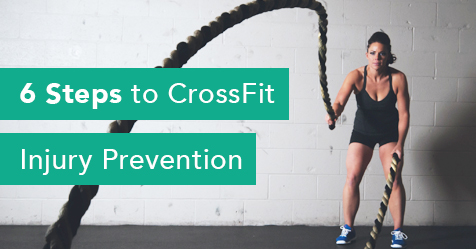
By Nadia Jones, DPT, SCS resident, Tuscaloosa (University of Alabama Rec Center)
 CrossFit is a fitness routine consisting of a variety of functional movements, including power lifting, gymnastic-like movements, cardio training and plyometrics (jump training).
CrossFit is a fitness routine consisting of a variety of functional movements, including power lifting, gymnastic-like movements, cardio training and plyometrics (jump training).
The cornerstone of CrossFit is the workout of the day, or WOD, which varies to put participants on the path to “general physical preparedness.”1
WODs can be performed as fast as possible for time or for as many reps as possible. The duration can be fewer than three minutes or greater than an hour depending on the programming and purpose of the workout. WODs can be performed as prescribed (Rx) or scaled to the participant’s abilities.
Because of perceived injury risk, CrossFit often has been seen as the black sheep of the fitness and sport industry by many in the medical community. Although the level of CrossFit injury risk is debated in medical literature, one thing is certain: There is an inherent risk of injury in all sports. Even golfers can suffer debilitating back or elbow pain that can keep them out of the game.
Some of the most commonly reported CrossFit injuries are to shoulders and backs, deriving from gymnastic-type movements and power lifts, respectively.2 Not only should coaches be aware of this, but participants should consider the potential for injury as they decide whether to perform a WOD Rx or scaled.
Meanwhile, here are six steps you can take to reduce CrossFit-related injury risk:
If you already belong to a gym, a physical therapist can perform a fitness screen to assess your strengths and weaknesses and educate you on how to bridge the gap in your performance. Drayer Physical Therapy Institute offers an injury prevention screening program carried out by physical therapists in and outside of the clinic.
References
1. http://journal.crossfit.com/2010/04/varied-programming.tpl
2. http://journals.sagepub.com/doi/pdf/10.1177/232596711453